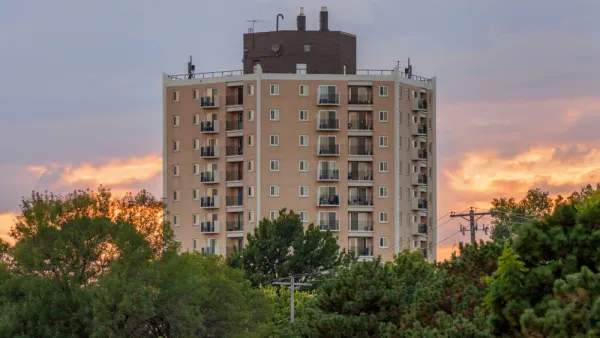The extremely strict proposal would eliminate sharp rent increases, but could stifle housing construction and worsen the city's housing crisis.

Bill Lindeke describes the details of St. Paul's proposed rent stabilization ordinance, which, if passed by voters in November, "would place unprecedented restrictions on the construction of new housing," leaving "an open question what it would do to the city’s housing market."
As proposed, "[t]he law would cap rent increases for all of the city’s 65,000 rented homes at 3% per year, but includes a complicated list of factors that allow landlords to apply for a variances — things like property taxes, maintenance issues, capital improvements (only if needed to bring a building to code), and a few others." According to Shane Phillips, author of The Affordable City, "historically, rent control policies have sometimes made housing crises worse by reducing the size and quality of the housing supply." Consequently, most of today's rent stabilization programs are "explicitly designed to ensure that the housing supply keeps growing."
Lindeke points to three issues with the St. Paul plan that could exacerbate the city's housing crisis. First, the policy does not exempt new construction, which could discourage developers from building in the first place. Second, the plan does not account fo inflation, yet "[a]lmost every other program is pegged somehow to the consumer price index (CPI) or enlists a committee that sets annual rates based on local conditions." The third factor is the unusual step of controlling rent on vacant units, rather than for each individual tenant, creating a situation "rife for potential corruption" and discrimination.
"if the HENS proposal passes, it would put St. Paul on its own," says Lindeke, and "will almost certainly cause other problems that would make the housing crisis even worse."
FULL STORY: If approved by voters, St. Paul’s rent control ordinance would be among the strictest in the world

National Parks Layoffs Will Cause Communities to Lose Billions
Thousands of essential park workers were laid off this week, just before the busy spring break season.

Retro-silient?: America’s First “Eco-burb,” The Woodlands Turns 50
A master-planned community north of Houston offers lessons on green infrastructure and resilient design, but falls short of its founder’s lofty affordability and walkability goals.

Delivering for America Plan Will Downgrade Mail Service in at Least 49.5 Percent of Zip Codes
Republican and Democrat lawmakers criticize the plan for its disproportionate negative impact on rural communities.

Test News Post 1
This is a summary

Test News Headline 46
Test for the image on the front page.

Balancing Bombs and Butterflies: How the National Guard Protects a Rare Species
The National Guard at Fort Indiantown Gap uses GIS technology and land management strategies to balance military training with conservation efforts, ensuring the survival of the rare eastern regal fritillary butterfly.
Urban Design for Planners 1: Software Tools
This six-course series explores essential urban design concepts using open source software and equips planners with the tools they need to participate fully in the urban design process.
Planning for Universal Design
Learn the tools for implementing Universal Design in planning regulations.
EMC Planning Group, Inc.
Planetizen
Planetizen
Mpact (formerly Rail~Volution)
Great Falls Development Authority, Inc.
HUDs Office of Policy Development and Research
NYU Wagner Graduate School of Public Service





























